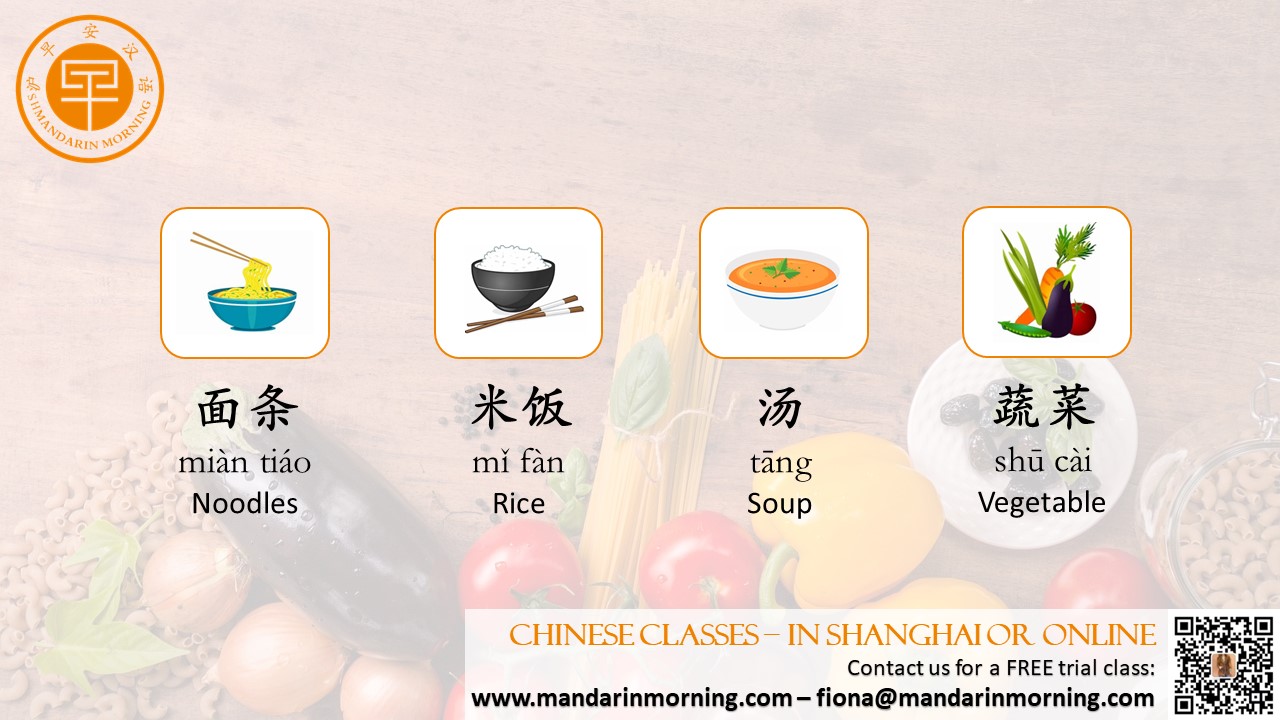Eating at a Chinese restaurant can be an exciting and delicious experience, but if you can’t read Chinese characters, the menu can seem overwhelming. However, with a few tips and tricks, you can decode a Chinese menu like a pro and order with confidence. Let’s talk about some of the most basic food characters, these are the ones you’ll find on almost any menu. Unlike English (where you wouldn’t be able to read a menu without knowing the specific names for each type of food), a lot of food groups share the same character, which means that you don’t need to learn every ingredient to decide on a dish. Just recognizing these few main characters can help you narrow down your options considerably. For example, if you like noodles, you need to be looking for 面 or 面条. If you dislike egg, avoid anything with 鸡蛋. This can be a big help in narrowing the options down. 面条 (miàntiáo): noodles You’re actually more likely to just find the character 面 (miàn) at the end of the dish’s name. This character, along with 饭 (fàn, next up!) is probably the one you’ll find the most often on a menu. It’s also one of your most basic choices. 米饭 (mǐfàn): rice Similarly with noodles, you’ll probably find the single character 饭 (fàn) at the end of the dish’s name to show that the dish is served with rice. 菜 (cài): dish OR vegetable On a menu, it will probably be used in the name of dish to mean vegetable, for example “四川泡菜” (sìchuān pàocài, which means Sichuan pickled vegetables). You might also find this character used in headings such as: 凉菜 (liángcài, cold dishes) or 热菜 (rècài, hot dishes) 青菜 (qīngcài) / 蔬菜 (shūcài): vegetable These characters more specifically mean vegetables (not “dish”), but you’re not as likely to find these on a menu, just as you’d be more likely to find the word “broccoli” than “vegetable” on an English menu. Instead, this could be helpful if you’re asking for a vegetable dish! 肉 (ròu): meat More specifically, you might find these characters on a menu: 猪肉 (zhūròu, pork), 牛肉 (niúròu, beef), 羊肉 (yángròu, lamb), 鸡肉 (jīròu, chicken). This is especially useful if you specifically want to order a certain type of meat, or if you’re a vegetarian (like me!) and you want to avoid these! 鱼 (yú): fish This one goes along with meat, and like other dishes, some love it, some hate it. So, now you can recognize it whether you’re craving or avoiding fish. 汤 (tāng): soup Soups are often an important part of Chinese cuisine, so you’re likely to run across this character on a menu. 饮料 (yǐnliào): drinks This often refers specifically to soft drinks. You can find this on a menu as one of the headings, which can help you categorize the menu options. This is can help you feel a little less overwhelmed! 鸡蛋 (jīdàn): egg Specifically chicken eggs! Eggs are commonly used, so you’ll find them on a lot of menus. 豆腐 (dòufu): tofu While tofu is seen as more of a vegetarian option in America, Chinese cuisine utilizes tofu in many different ways, even incorporating them in dishes with meat. As a vegetarian, knowing these characters will be especially helpful. 炒 (chǎo): fried This doesn’t mean deep-fried, just fried shallowly in oil. This character is often combined with others, such as 炒饭 (chǎofàn, fried rice), 炒面 (chǎomiàn, fried noodles, or “chao mein” as you might see it in some Westernized Chinese restaurants), 炒蛋 (chǎo dàn, scrambled eggs, not fried eggs like you might think). 主食 (zhǔshí): main food This usually includes rice or noodles. These characters will show up as a heading on a menu, you can use them as a helpful guide for choosing a filling dish, as opposed to a small side dish. |